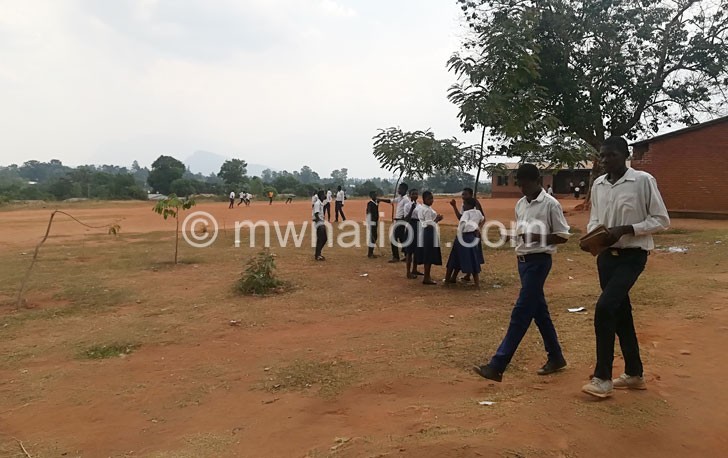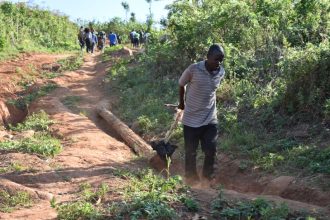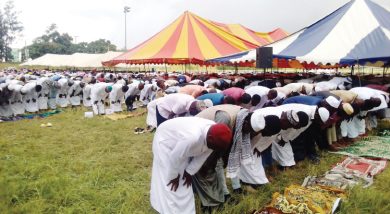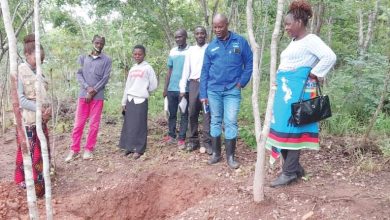Long walk to school: Tales from rural areas
In 1999, Ministry of Education Science and Technology announced a revolutionary policy, which converted scores of Malawi Distance Education Centres (DEC) to Community Day Secondary Schools (CDSS) to improve the quality of education and reduce the distance students walk to access secondary education to a maximum of eight kilometers (km). But 19 years down the line, the situation remains too far from improving as our reporter ALBERT SHARRA found out in this first part of a feature series on access to education:
On a school day, the fog that engulfs Mulanje Mountain every morning, precisely in Muloza, hides the pain of many students at Muloza Community Day Secondary School (CDSS) in Mulanje.

The chilly atmosphere it creates, says one student, is a source of energy that helps them walk up and down the precipitous long terrain to the school.
“A clear morning means more hours of sweating,” says Cecilia Baluwa, a Form One Student at Muloza CDSS.
She comes from Safari Village, Traditional Authority (T/A) Njema in the district. The distance between her home and Muloza CDSS is approximately 20km and the paths she uses to school cut across a hilly topography and tea estates.
“You have to use shortcuts if you want to make it to school in time, but this is only possible on return because the paths cut across tea fields and the plantations are always soaked in dew in the morning,” she says.
The 20-year-old is repeating Form One. Distance and poverty forced her out of school in 2011 when she was 13. She is an orphan. Her mother was the first to die when she was six months old. Her dad died a year later.
Since then, her survival has been at the mercy of her widowed grandmother who is now a senior citizen. The grandmother is deaf and has difficulties in walking. The only distance she walks is to her nearby small garden.
“We live on farming. The little we get from our garden is what keeps us going,” explains Cecilia.
Long walk to school
Since the age of 12, Cecilia considers herself a mother and head of the family. Frustrated by the long distance to school in 2011, Cecilia opted to drop out before completing her first year in secondary school to feed the family.
“It was impractical to stay in school,” she recalls. “The most haunting thing was that I would knock off late from school and find no food at home. I wanted to work and help my grandmother for she raised me singlehandedly and without a proper source of income,” she argues.
The same year, Cecilia joined Chisambo Tea Estate as a casual labourer. Unfortunately, she says the returns were too little and this only exposed her to libidinous men who made promises they could not live up to. She was sexually abused and today is a mother of a six-year-old child, who is now in Standard One.
Having tested both lives of working as a casual labourer and a parent Cecilia decided to go back to school in a bid to find a permanent solution to her problems.
Today, she is at Muloza CDSS, thanks to a well-wisher who meets her schools fees.
“I am happy to be back in school, but distance and poverty still pose a threat to my success,” she laments.
Her child needs her support to stay in school. Her grandmother too needs her to survive. That is what poverty, which the United Nations Development Programme (Undp) Human Development Index report for 2018 says is worsening in Malawi, is impacting young innocent souls.
Cecilia, who is the only child in her family, says she does not know weekend as days to rest. She uses Saturdays and Sundays to do piece works in the field.
“The money raised is what is keeping my family going,” she says.
Cecilia explains that she leaves for school on an empty stomach and returns home not knowing what she will find to eat.
Apart from a school uniform bought by a well wisher, she has only two dresses. Her pair of shoes hardly lasts due to the long distance to school.
Walking over 40km to and from school everyday remains unrealistic to her. She says it is hell during rainy season.
Rags between her legs
When Cecilia is on her period, life becomes more unbearable, she says.
She does not know where to get artificial sanitary pads. This means she has to walk to and from school with rags from old cloths between her legs.
“It is torture for me and many other girls who walk long distances to school during menses.
“The problem with menses is that long walks create smell and make one uncomfortable to stay in public and is the reason most girls stay home during their menses,” reveals Cecilia, looking sad.
She wishes she was in a boarding school, but that decision is faced by two challenges: poverty and the need for her presence at home to support her child and aging grandmother.
“If possible, help me with a bicycle. Cycling to school will ease the burden,” she pleads with well wishers.
Cecilia is not alone in this predicament.
Students from Maliyera, Namwera and Bona villages spend more than two hours on the road to access Muloza CDSS.
It is the same story at Vonkeni CDSS in the district, students from Mpala and surrounding villages hardly complete secondary education due to distance.
“It takes you more than three hours to walk from Mpala to Vonkeni CDSS,” says Chrissy Chikopa, a Form Four student at Vonkeni CDSS.
The story in Mulanje mirrors the situation on the ground. Thousands of students in CDSS walk an average of 20km to access secondary education. This is against the government’s policy that the longest distance a student should walk to access a secondary school should be 8km.
Gaps in access to education
It all begun in 1999 with a policy that converted DECs to CDSS. Education activist Benedicto Kondowe says government’s objective was to improve access to secondary education and the key component of the initiative was to ensure that students walk the shortest distance to access a secondary school.
In Maliya, a community within Blantyre rural west constituency, students walk 34km to and from Lumbira CDSS. The topography is hilly and the roads are dusty and gullied that students use shortcuts passing through hills to access secondary education.
A Form Four student at Lumbira CDSS, Mphatso Matabwa, says life has never been easy.
“Imagine walking 34km every day and you expect us to say government cares about its student?” he laments. “In a week, I can hardly to go to school for five times.”
Students in Matchuwana Village, T/A Mchilamwera in Thyolo spend more than two hours on the road to access Mpinji CDSS.
In Mzimba, students living in Unyolo area need to cover over 15km to reach Champhira CDSS. The same story is in Ntcheu. Schools such as Chikande CDSS are inaccessible to many students.
Our spot check with district education officers exposed serious gaps in access to secondary education, particularly among those studying in CDSS.
However, this is a violation of the Agenda 2063 aspirations on education and Sustainable Development Goals (SDGs), particularly goal number IV, which urges nations to ensure inclusive and equitable quality education and promote lifelong learning opportunities for all.
Malawi’s laxity in implementing its education policy is even frustrating one of the major themes of the SDGs, chiefly ‘Leaving no one behind’.
By failing to ensure schools are within reach, many students drop out before completing the secondary education cycle and this is leaving many students behind. The United Nations argument is that no country can develop when some of its people are behind.
Leave no one behind
UN wants government policies that ensure no one is left behind and that the last man standing is pushed forward.
Our investigations indicate that most students start Form One while very young, with some as young as 10. Thus, walking over the recommended distance of 8km to access education is torture. No wonder, many students hardly complete the secondary education cycle.
The 2016 Malawi Demographic and Health Survey reveals that almost 70 percent of Malawians aged 15 years and above do not have a secondary school education. Women are the most hit at 74 percent. Unicef says the national dropout rate is at 10.5 percent.
Distance is one of the factors. Those who brace the long distances are challenged to balance time to study after classes.
“Yes, distance affects some of our students; particularly those who come from areas located over 8km from the school. I know a girl who dropped due to distance,” says Clement Majawa, a head teacher at Muloza CDSS.
He says there are few students aged above 18 years in the school. The youngest are in junior classes and Majawa reveals his school registers high school dropouts in junior classes, but says the reasons are multifaceted.
The situation in Malawi promotes violation of several other SDGs such as goals I, II, III, IV and X. Failing to keep students in school creates a new generation living in poverty and hunger against aims of Goal I and II. Walking a long distance to school fuels poor health and well being which stands in opposition to Goal III.
By the end of the day, the situation promotes inequalities among youths because some have access to education while others have not. This is what goals IV and X are trying to address.
As CDSS policy clocks 20 years next year, Malawians are yet to see lasting solutions from government to the problem of long distance to secondary schools. The most publicised 200 secondary schools to be constructed with support from US government is a relief, but if history is to go by, it may be too early to celebrate. In Blantyre rural, Maliya CDSS was constructed in 1998 to be a fully fledged CDSS, but 19 years down the line, it remains a junior secondary school. CDSS.





